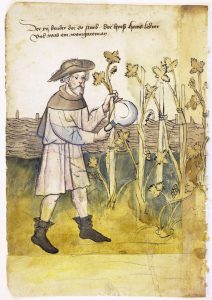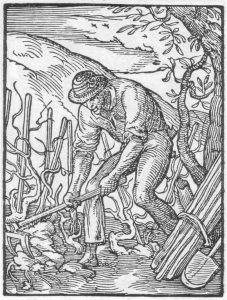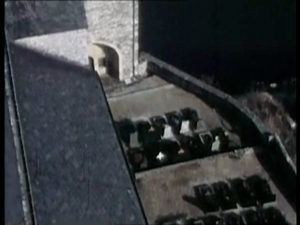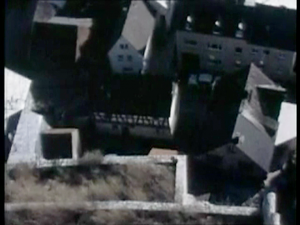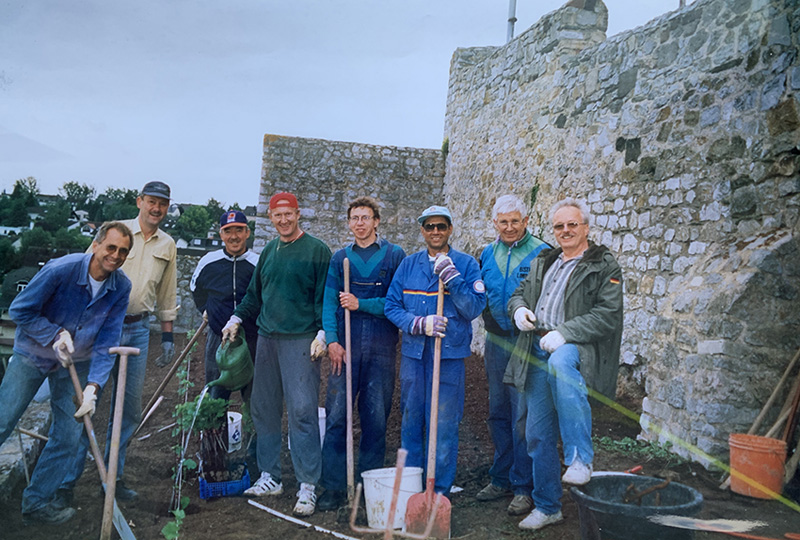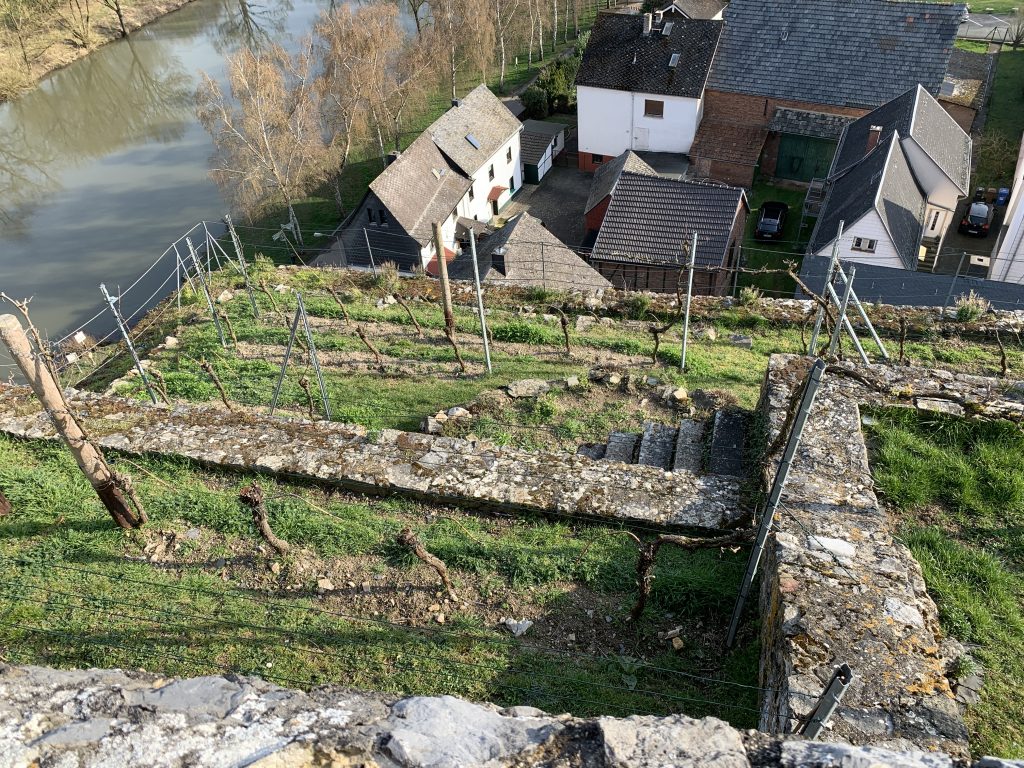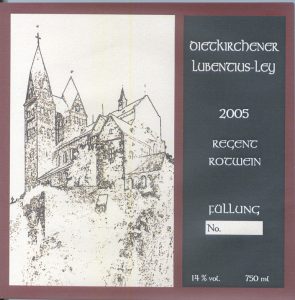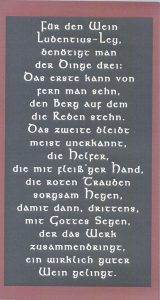Winegrowing in and around Dietkirchen
In the following a view of the wine-growing in Dietkirchen takes place. From documents we know that viticulture already took place in ancient times and was practiced for centuries until about the end of the 18th century. He fell asleep and was awakened in new time again from his Sleeping Beauty sleep.
- How and from where did the wine come to Germany? When and how did he come to the river Lahn?
- Eldest documentary evidence for winegrowing in Dietkirchen
- More documentary evidences for the winegrowing in Dietkirchen
- Old Dietkirchen history wine types
- End of the winegrowing in Dietkirchen
- Restart of wine growing in Dietkirchen
- The grape variety “Regent”
- Bottle and label
- Conflict in laws
- The monastery, the wine and the drunkeness
By clicking on one of the menu points you will reach the appropriate section.


How and from where did the wine come to Germany? When and how did he come to the river Lahn?
As with many things, the Romans were the godfathers who introduced wine to the German-speaking world over 2000 years ago. It is assumed that it was due to convenience that people grew wine themselves in the areas occupied by the Romans instead of having it transported to these areas in large and heavy amphorae. It is assumed that the spread of viticulture came from the Rhine-Main area to the Lahn via the Limburg large valley and not via the Middle Rhine, as it might be more likely.
As proof of this, there are documentary mentions with reference to viticulture, e.g. in a deed of donation from Charlemagne to the Abbey of Prüm from the year 790, a deed from Schiesheim from the year 879 or a deed from Oberneisen from the year 958.
The Winemaker
(Housebook of the Mendel Twelve Brothers Foundation, Volume 1. Nuremberg 1426-154)
Eldest documentary evidence for winegrowing in Dietkirchen
In the area directly in or around Dietkirchen, viticulture is also mentioned in documents relatively early. Thus, there are numerous documents in which vineyards in Dietkirchen or at the borders to Dietkirchen are mentioned.
Probably the oldest known reference to viticulture in Dietkirchen can be found in a document from 1293. In it, Gerhard, Custos of Dietkirchen Abbey, bequeaths half of the vineyard of almost one acre, which he and C(onrad), his companion and table companion (‘socius et commensalis’), planted with joint labor and expenses, to the altar of the Blessed Virgin Catherine in St. Lubentius Abbey (HHStAW Bestand 19 Nr. U 5).
Another of the oldest known documents is from the year 1298 (HHStAW Bestand 40 Nr. U 34), in which Wigand von Kreuch and his wife bequeathed by will to an altar of the Limburg church, among other things, the “…upper vineyard on the other side of the bridge on the hill to Dietkirchen…”.
More documentary evidences for the winegrowing in Dietkirchen
Three documents from 1327 (HHStAW, 19, U 16, HHStAW, 19, U 16a, HHStAW, 19, U 17) refer to a dedication of chaplain Rorich to the altar of St. Catherine in Dietkirchen Abbey, in which the chaplain’s vineyards in Dietkirchen are bequeathed to this altar along with other property.
In 1332 it is documented that the brothers Heinrich and Enolf zu Dietkirchen received a vineyard near Dietkirchen on lease from Count Emicho von Nassau and his wife Countess Anna (HHStAW Bestand 115 Nr U 28).
Knight Friedrich Frei von Dehrn and his wife Alheid buy the vineyards located between Dietkirchen and Limburg in 1352 (HHStAW Abt. 170 I Nr. 441).
Dean Heinrich von Elz vows in 1366 to redeem the Dietkirchen monastery’s grain gülte on the farm at Steeden. He had sold the farm to Johann von Attendorn, canon and custodian at Dietkirchen. A vineyard on the border of the Dietkirchen parish was used as a pledge for the redemption of the rent (HHStAW Bestand 19 Nr. U 52).
Johannes von Attendorn, canon and thesaurar of the St. Lubentius foundation at Dietkirchen, bequeathed 1/2 acre (‘iurnale’) of vineyard on the mountain ‘Burgheym’ near Tylo, without the interest, for life to his relative (‘cognato’) Johannes on July 2, 1387. After his death the vineyard, also without the interest, should belong to the St. Michaelsaltar at Dietkirchen (HHStAW Bestand 19 Nr. U 79, HHStAW Bestand 19 Nr. U 79 a, HHStAW Bestand 19 Nr. U 79 b).
In 1389, Gernant Fischer of Limburg and his wife Nese bequeathed to the St. Johannes Altar in Dietkirchen Abbey the vineyard at the Burgheim in Dietkirchen, which is located at the presence vineyard of that Abbey (HHStAW Bestand 19 Nr. U 82).
Eckart von Dietkirchen, vicar at the Andreas altar at Dietkirchen Abbey, sells in 1398 to the dean and the canons and vicars of Dietkirchen Abbey 1 malt of corn rent and puts as pledge, among other things, 1/2 acre of vineyard between the vineyard of Our Lady and the vineyard of St. Mary Magdalene on the wall (HHStAW Bestand 19 Nr. U 86).
On June 23, 1451, the vicar of the altar of St. Andrew Johann von Heimbach, together with the vicar of the altar of St. Trinitas, lends a vineyard belonging to both altars in Dietkirchen (Struck, Vol 2, p. 110 no. 218).
1479 Kunigunde ‘Lady’ zu Beselich and the convent lend their vineyard at Dietkirchen, which is called Nonnnenberg, to a Ludwig Fanter from Dietkirchen for 15 years against 1/3 of the yield. (HHStAW fonds 13 no. U 69).
According to a interest register (Salbuch) of 1549, the vicarie of the altar St. Katharina owns, among other things, a garden together with a courtyard in the center of the village and two small gardens and 2 patches of Driesch, formerly vineyards, in Dietkirchen (Struck, Das Stift St. Lubentius in Dietkirchen, 1986, p. 145). According to this interest book (Salbuch), the altar of St. Mary Magdalene also owns, among other things, four partly desolate vineyards, which give 12 Alb. of rent (Struck, Das Stift St. Lubentius in Dietkirchen, 1986, p. 149).
The vicarie of St. Peter in about 1569 has in income 7 ½ MI. Grain, 1 MI. Oats and 1 fl. 6 Alb. and owns two neglected and uncultivated vineyards (Struck, Das Stift St. Lubentius in Dietkirchen, 1986, p. 155).
The result of wine growing, the wine itself, was used in many ways. Thus, it was used as mass wine, of course, but also as a means of payment and for normal consumption. In the German Wine Newspaper of October 1, 1880, it says, for example, that the quality of the wine was already described in the Limburg Chronicle of Tilemann Elhen von Wolfenhagen as “redlich zu trinken” (good to drink) upto “er sei sauer gewesen und schmecket als Saft von Holz-Äpfeln” (it was sour and tastes like juice from wood apples).
Most of the vineyards and/or vinegardens may have been located on the slopes towards the Lahn between Dietkirchen and Limburg. However, it can also be assumed that vineyards or vine gardens were located in the area of today’s cemetery and also in the countryside and on the slopes there of the area now built up with residential houses. Unfortunately, the documents do not reveal the exact location.
Old Dietkirchen history wine types
Willy Schuy, who was mayor of Dietkirchen from 1948 to 1954, described many things in an essay he wrote about viticulture in Dietkirchen, which also appear in this article. Unfortunately, he often neglected to name the sources from which he derived his findings.
So he also names the following types of wines which are said to have existed in Dietkirchen. However, it is to be assumed strongly that not the wines were called in such a way, but the vineyard or wine garden.
- Am Rümmler
- Am Borkern
- Dietkircher Berklaken
- Traubenhöhe
- Weißer Heiligenstock
- Am Burgheim
(Woodcut from Jost Amman’s 1568 book “Das Ständebuch”)
End of the Dietkirchen winegrowing
The population of Dietkirchen, which until the 19th century consisted mainly of farmers and day laborers, probably reduced the cultivation of wine in the 18th or 19th century at the latest, since the cultivation of wheat and potatoes and other crops was probably more lucrative than the cultivation of wine. Furthermore, the beginning of industrialization led to the fact that one could make a living in other professions instead of as a farmer.
According to Schuy’s report, poor growth, bad harvests and the lack of wooden stakes for tying up the vines contributed to the decline of viticulture.The monastery apparently also had fewer and fewer local craftsmen to employ.
Winegrowing seems to have fallen into oblivion in Dietkirchen from this time on.
Restart of the winegrowing in Dietkirchen
However, since a few years, more precisely since 1998, this is not quite true anymore. In this year some men of the parish of Dietkirchen had the idea that the terraces on the south-west side of the church could be used for a vineyard. On these terraces stood the former monastery buildings, most of which had probably been destroyed in the Thirty Years’ War and of which only the foundation walls remained in part.
These terraces were used as a children’s cemetery until about the middle of the 20th century. The area above the terraces was also used as a normal cemetery until this time.
For the project of vine cultivation on the terraces, the terrain, which had become very overgrown in the last years, had to be cleared by hand first, because the use of machines was not possible there. Shrubs and thorny bushes had to be removed, and the terrace steps had to be leveled.
View of the former cemetery on the “Zinne” with remains of the walls of the monastery buildings (right side of the picture)
(Picture from a film “Dietkirchen in the 60s” of the former Filmclub Dietkirchen)
View of the remains of the walls of the former monastery buildings on the “Zinne”.
(bottom of the picture)
(Picture from a film “Dietkirchen in the 60s” of the former Filmclub Dietkirchen)
“Vineyard team” planting the vines on 13.06.1998.
From left: Peter Edel, Lothar Schmidt, Werner Burggraf, Bernhard Eufinger, Ludwig Schmitt, Joe Singh, † Heinz Wagner, † Hans Albert.
(Repro photo Ludwig Ries, original photo loaned by Werner Burggraf)
View over the vines to the river Lahn in springtime
(Photo: Ludwig Ries, 03/2020)
The grapevine “Regent”
In the search for a suitable and robust vine, the grape type “Regent” was found. It is said to be particularly resistant to frost and fungal attack. The grape variety “Regent” was first crossed in 1967 from the white grape variety Diana, which is itself a cross between Silvaner and Müller-Thurgau, and the red grape variety Chambourcin. The name Regent refers to the famous 140.5 carat diamond from India worn by Louis XV on his crown, Marie-Antoinette as a piece of jewelry and Napoleon as a rapier pommel, and which was the largest diamond in the world at its time. It was not until 1993 that the Regent grape variety was granted plant variety protection, and in 1995 the vine was granted German variety approval, followed a year later by European variety approval. In 1996, it was also classified for quality wine production.
Regent is known for its ability to reach very high must weights, which in good sites can reach between 80° and 85° Öchsle, thus surpassing even Pinot Noir. Due to the not too pronounced acidity, the wine appears very mild and yet convinces with a great fullness. As a deep red, almost black red wine, it is often compared in taste with Merlot. Wine connoisseurs taste and smell the scent of cherry, currant and cassis, confirming it a very full-bodied and fragrant bouquet, thus rather reminiscent of southern wines.
The calcareous soil on the terraces of the Lubentius Church, together with the heat stored and slowly released to the vines by the quarry stone walls of the church and the remains of the walls of the monastery buildings, which were destroyed in the 30-year war, as well as the magnificent south-facing slope, ensure that the vines receive everything that is considered a prerequisite for a good wine during their ripening.

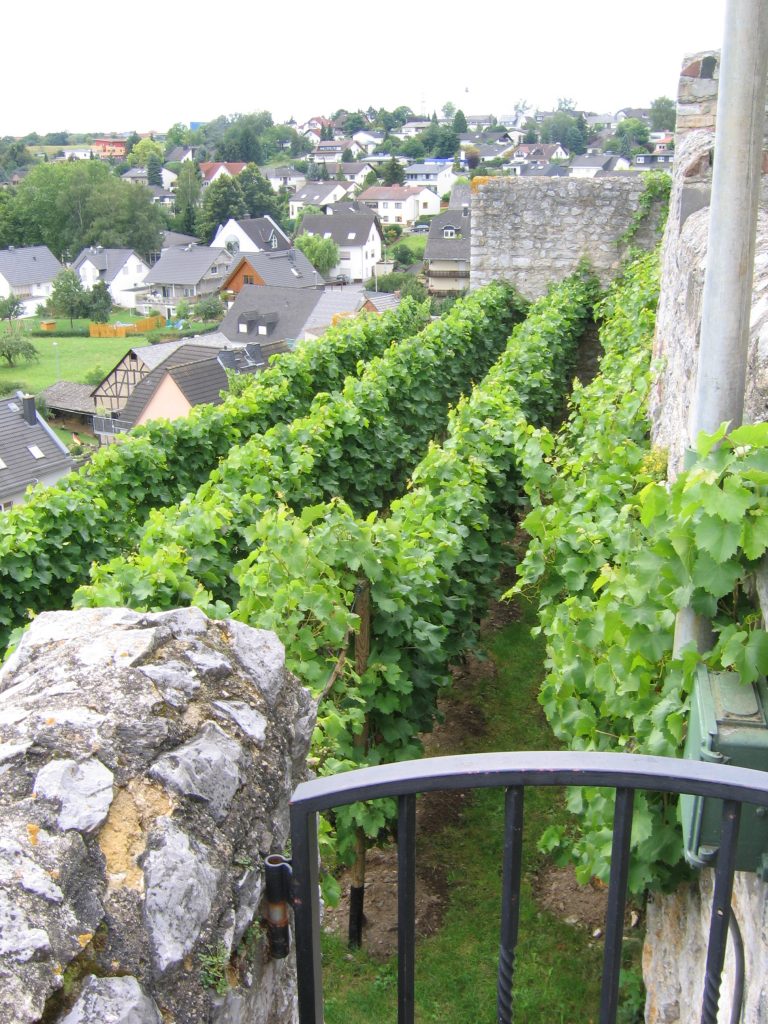
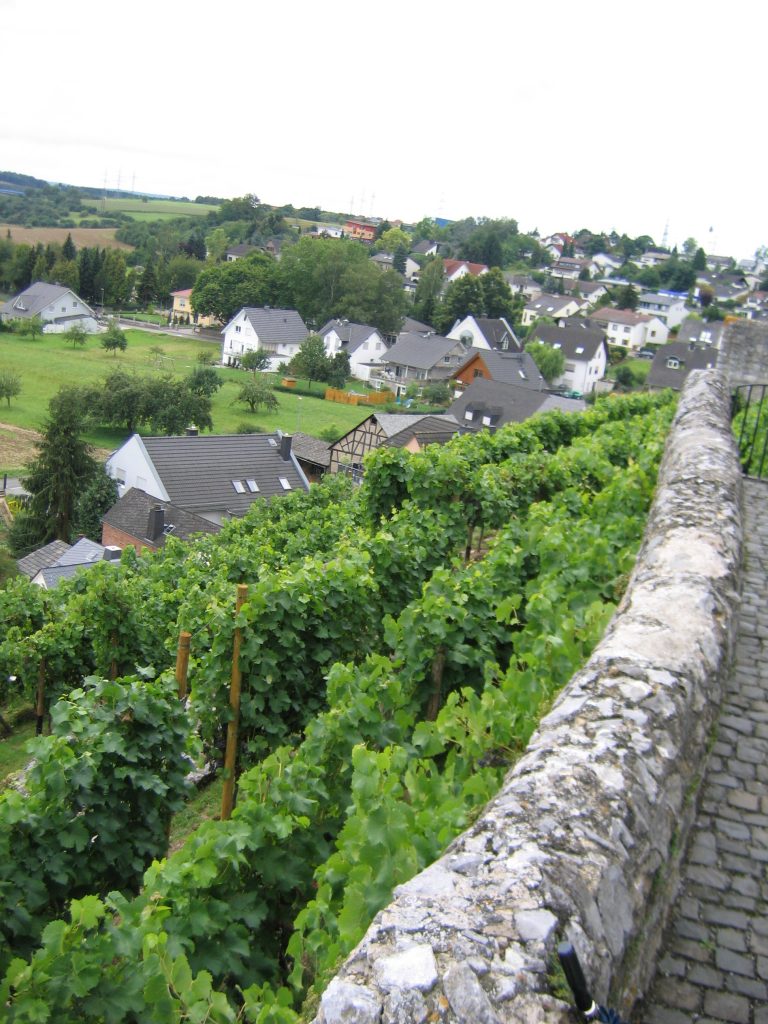

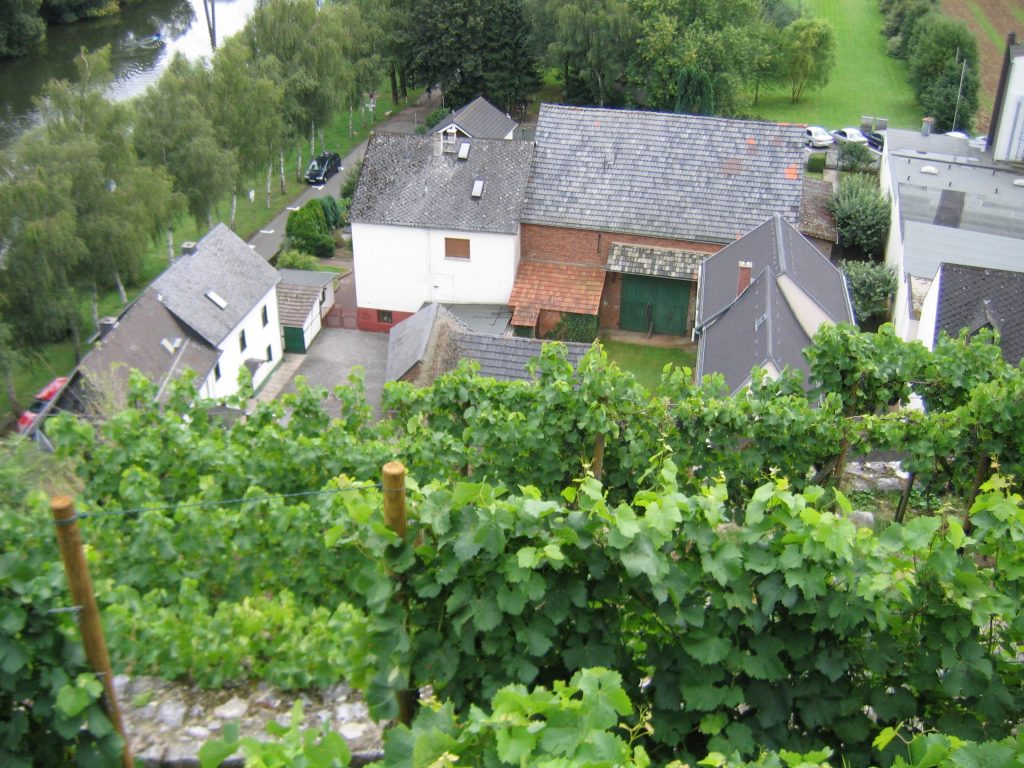

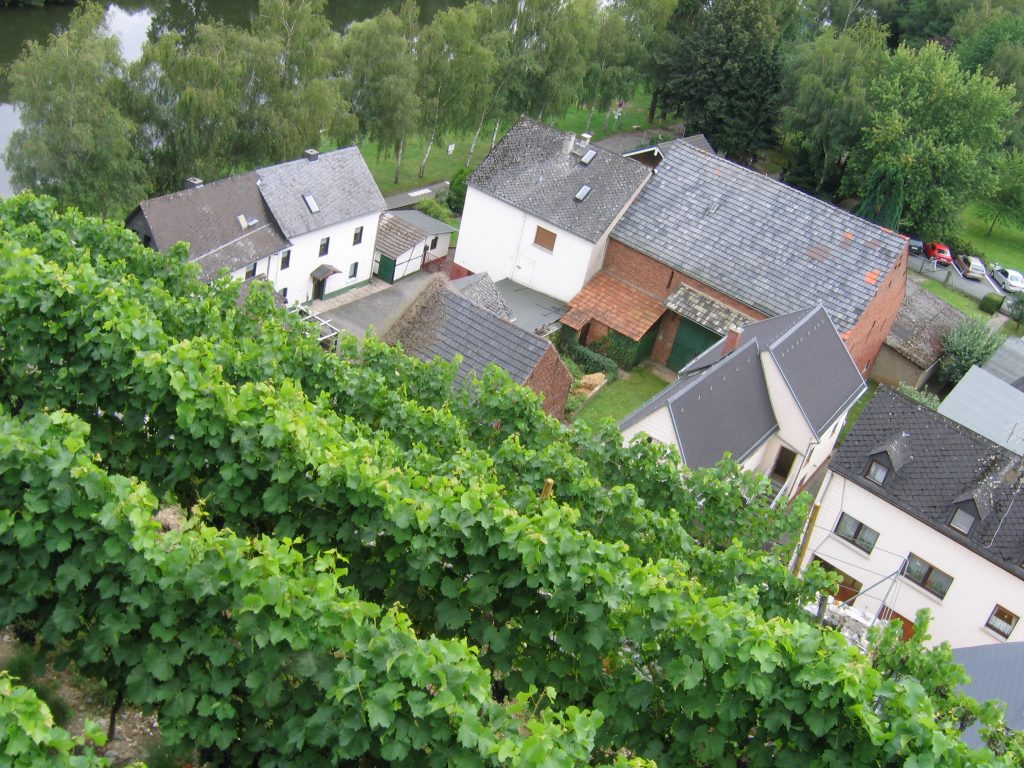
The vines planted in the summer of 1998, more precisely on 12/13 June 1998, were blessed in the same year by Bishop Kamphaus, who was in Dietkirchen for confirmation.
In the autumn of the year 2000, more precisely on September 25, 2000, the grape harvest took place for the first time. The development of the must took place and takes place until today then by a winegrower.
On May 22, 2001, the first bottle was uncorked and the first drops of red wine were tasted. According to Father Staudt, the wine was “soft” in the finish, the wine had a “…full body, a balanced taste and fills its own body with a lot of warmth…”. The first harvest yielded the yield of 25 bottles of wine. The wine has an alcohol content of about 13%.
Since then, year after year, there is the “Lubentius Ley”, as the wine was named. Ley is an old word for rock or cliff. Meanwhile, between 300-400 kg of grapes are harvested, which then also corresponds to about 300-400 bottles of wine.
Mainly the wine is used for the church service as mass wine. This is also due to Bishop Kamphaus, who gave permission for this wine to be used as mass wine, as usually only white wines are used as mass wine.
On special occasions, the wine is also given away, but unfortunately it is not available for purchase. Those who would like to taste the wine must wait until the Dietkircher Maat, which takes place every three years and at which the wine is served for a donation.
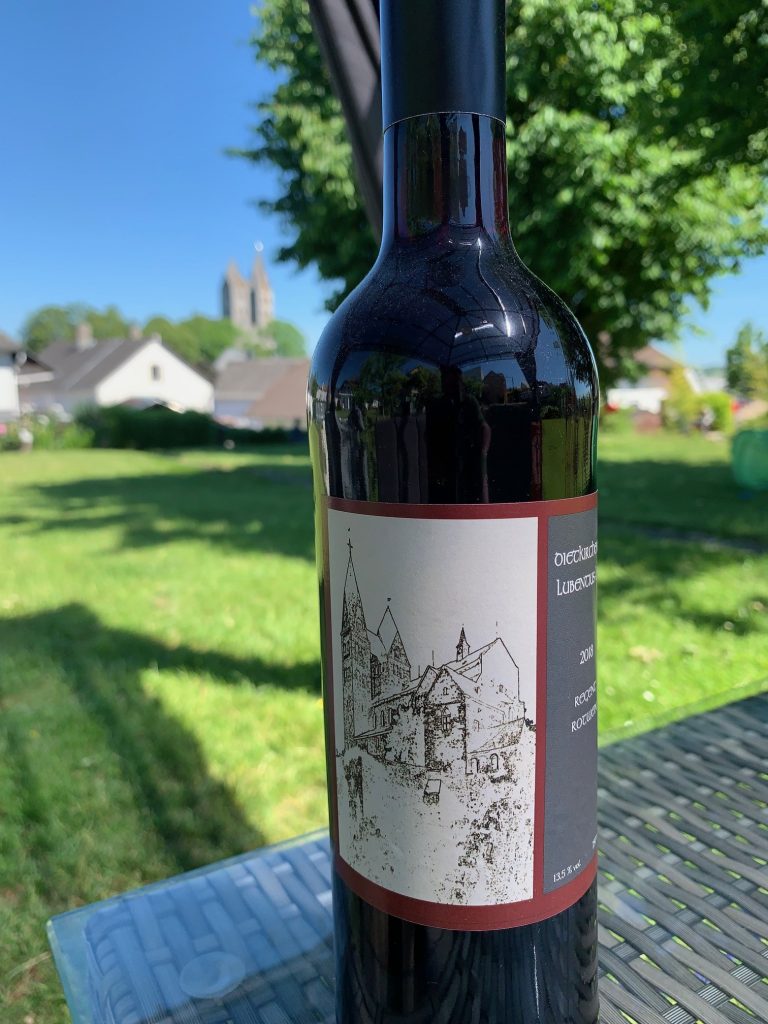
Bottle and label
The Lubentius Ley is also commemorated in the following poem taken from the book of poems “…in rhymes 3” by Alois Staudt, the author of the poem is Arne Mourik. The poem is printed on the back label of the bottles of Lubentius Ley.
Für den Wein Lubentius-Ley,
benötigt man der Dinge drei:
Das Erste kann von fern man seh ́n,
den Berg auf dem die Reben stehn.
Das Zweite bleibt oft unerkannt,
die Helfer, die mit fleiß ́ger Hand,
die roten Trauben sorgsam hegen,
damit dann, drittens mit Gottes Segen,
der das Werk zusammen bringt,
ein wirklich guter Wein gelingt.
For the wine Lubentius Ley,
you need three things:
The first can be seen from afar,
the mountain on which the vines stand.
The second often remains unrecognized,
the helpers, who with industrious hand,
carefully tend the red grapes,
so that then, thirdly, with God’s blessing,
who brings the work together,
a really good wine succeeds.
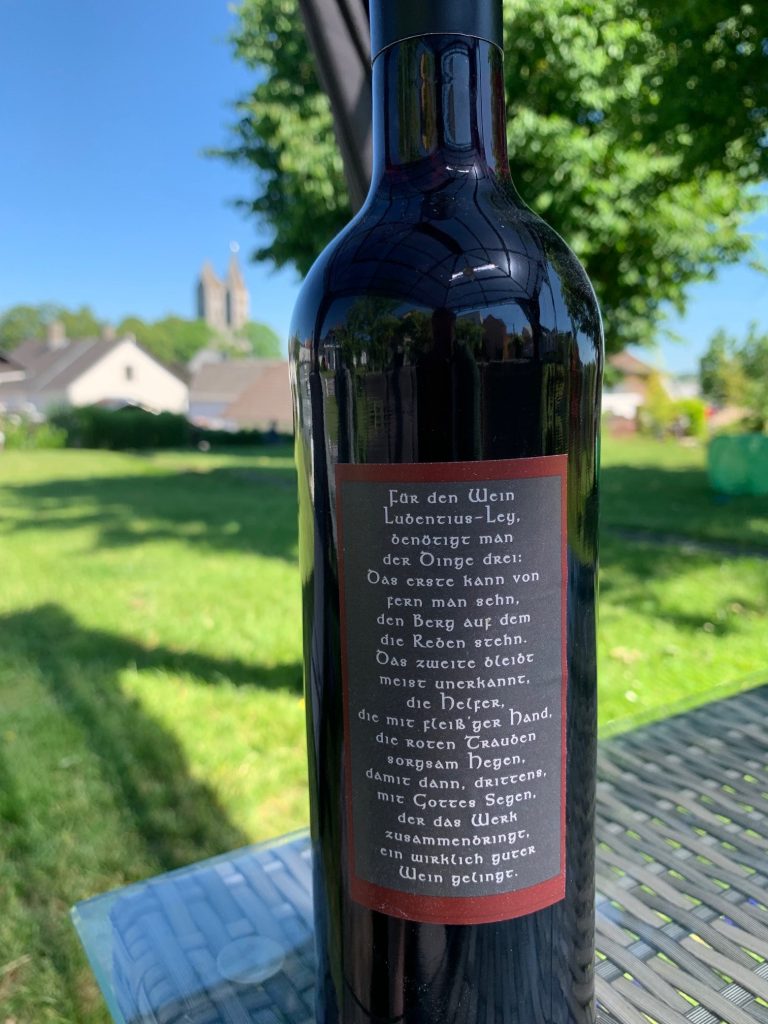
Conflict in laws
It could also happen that someone came into conflict with the law in connection with wine. Thus, the Deutsche Weinzeitung reports in issue 37 of October 1, 1880, about a session of the criminal court in Limburg that on September 16, 1880, a innkeeper Johann Lang from Dietkirchen was tried for fraud. The innkeeper had cheated a Hochheim wine merchant out of wine for about 700 marks. The fraud did not seem to be proven with certainty by the standards of the time, and the defendant was acquitted.
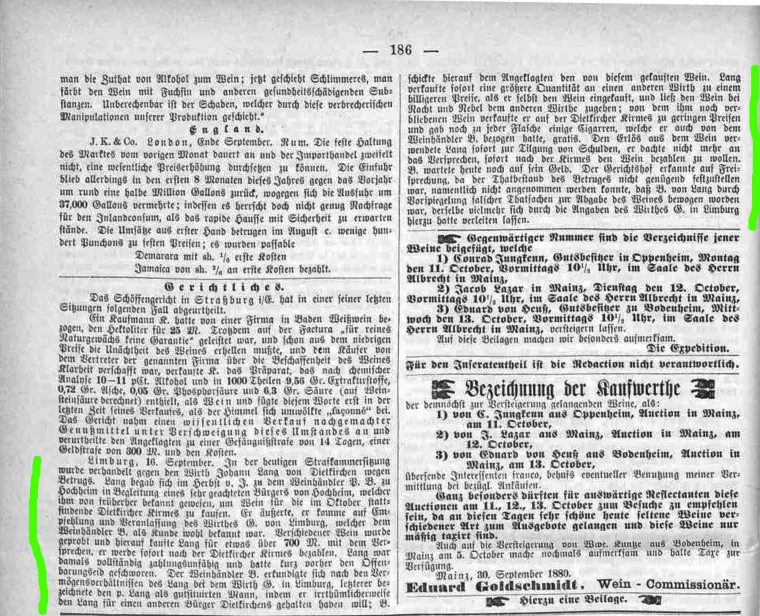
The monastery, the wine and the drunkenness
Cheerful and thoughtful from the time of the monastery on the subject of wine and drinking can be read in some documents of the monastery and Struck has mentioned it again and again in his work “The monastery of St. Lubentius at Dietkirchen”, which was published as volume 4 in the series Germania Sacra.
Thus, during a visitation of the monastery in 1725, it was reprimanded “…that on Sunday Trinitatis, when the visitators were present, wine, among other things, was also sold in front of the cemetery and served to persons of both sexes (W Abt. 19 Nr. II a 7)…” (Struck, Das Stift St. Lubentius in Dietkirchen, 1986, p. 214).
In 1531 ” Lord ” Jorge of Dietkirchen sues the Schuers Wentzen Hen of Dietkirchen at the court of Niederhadamar, that the latter threw stones at him and hit him, so that he had to have a shearer. The defendant defends himself by saying that he went after him because he did not want to pay for his wine in the inn, and Mr. Jorge then pulled his knife on him (W Abt. 171 Nr. Z4404 BI. 5-6). (Struck, Das Stift St. Lubentius in Dietkirchen, 1986, p. 390).
On April 29, 1662, an extraordinary visitation was carried out in the monastery. The canons were strictly admonished to avoid visiting the taverns (popinas) in Limburg and sitting there with gamblers and other scandalmongers (Struck, Das Stift St. Lubentius in Dietkirchen, 1986, p. 92).
During a visitation in 1584, the lack of a schoolmaster was reprimanded. The reason for the lack, however, was that the dean Jodocus Pfalzel had been put to bed by the schoolmaster and a maid after a drinking bout. When it turned out that the maid had been impregnated, the dean induced the schoolmaster to take the blame and leave. (Struck, Das Stift St. Lubentius in Dietkirchen, 1986, p. 170).
Abbreviations:
- W = Hessisches Hauptstaatsarchiv Wiesbaden (e.g. W Abt. 19 Nr. II a 7 = Hessisches Hauptstaatsarchiv Wiesbaden – Section 19 – Nr. II a7)
- HHStAW = Hessisches Hauptstaatsarchiv Wiesbaden (e.g. HHStAW Bestand 19 Nr. U 5 = Hessisches Hauptstaatsarchiv Wiesbaden – stock 19 Nr. U 5)
Sources:
- Struck, Das Stift St. Lubentius in Dietkirchen, 1986, Vol. 4, Series Germania Sacra
- Struck, Vol. 2, Quellen zur Geschichte der Klöster und Stifte im Gebiet der mittleren Lahn bis zum Ausgang des Mittelalters
- HHStAW

